Timeline
2.5 years
September 2015 – April 2018
Context
The University of Michigan Football team draws over 100,000 fans to its home games every year. Students, locals, and out-of-towners make their way to the Big House, and the huge influx of people creates a large need for parking.
I began pursuing this project for my senior design class with a team of three other students. I came up with and started working on this idea in an entrepreneurship class during the first semester and I brought it into my senior design class to give it the attention and focus that it needs.
After graduating, I finished building out our set of features, incorporated in the Commonwealth of Massachusetts, and have continued to work on Spotted during my free time.
Problem
Parking structures fill up quickly and are far from the Big House.
Ann Arbor has a lot of parking structures. To make finding parking a bit easier, they have counters the entrances displaying the number of open spots. This doesn't change the fact that all of the parking structures are far from the stadium and that the structure fill quickly.
Driving around town finding a parking spot at someone's house takes forever.
The residential area surrounding the Big House experiences heavy traffic thanks to people looking for parking. Traffic builds up as a result of people searching for open parking spaces at people's houses. If only there was a way for them to know where they were going park before getting to town...
You see tons of people holding signs at their driveways saying they have spots – that has to be annoying.
People who sell their parking spots have to spend hours at the bases of their driveways holding "Park Here" signs to sell their spots. This takes up a lot of time for sellers, time that they would rather be spending watching the pre-game show or hanging out in the Big House before the game starts. Being able to sell their spots without having to stand outside for hours would be great for them.
Process
Research Stakeholders' Needs
I began by researching the market for parking in Ann Arbor. I looked into parking structures, interviewed residents who sell parking spaces, and people who need parking. I did a lot this research by walking around the residential area on game days, asking residents and people parking questions about their experiences.
I talked to 12 sellers and 19 buyers, learning the core problems with the current parking situation. Sellers needed a way to sell their parking spots without standing outside for hours, and buyers needed a way to find parking without wasting time driving around in search of them.
To better organize our stakeholders and our process, we developed personas to accurately portray our users' needs.
Short-term Buyers
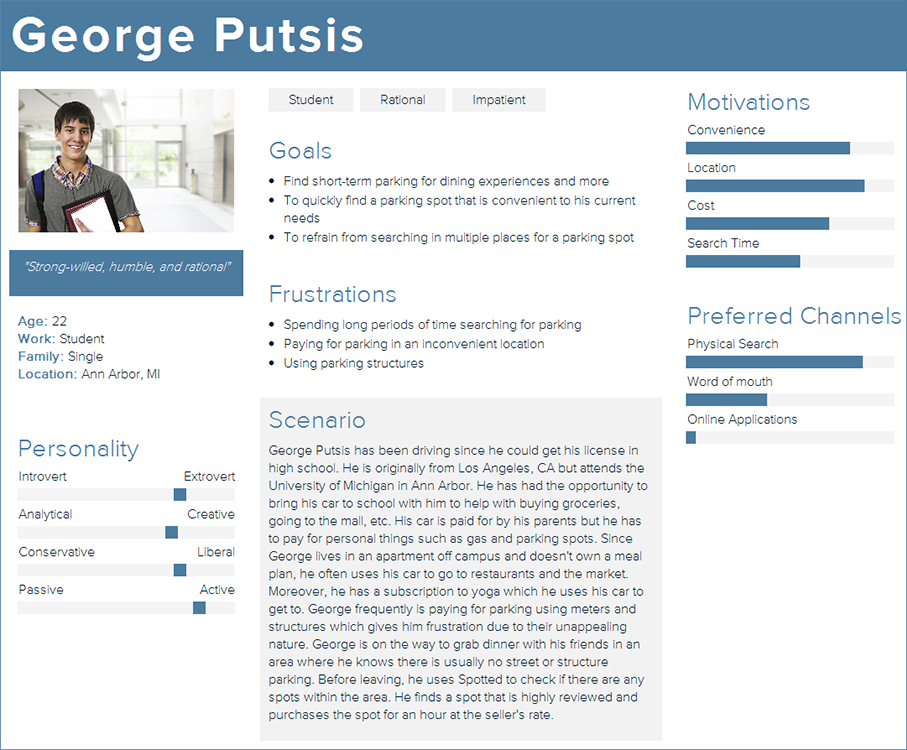
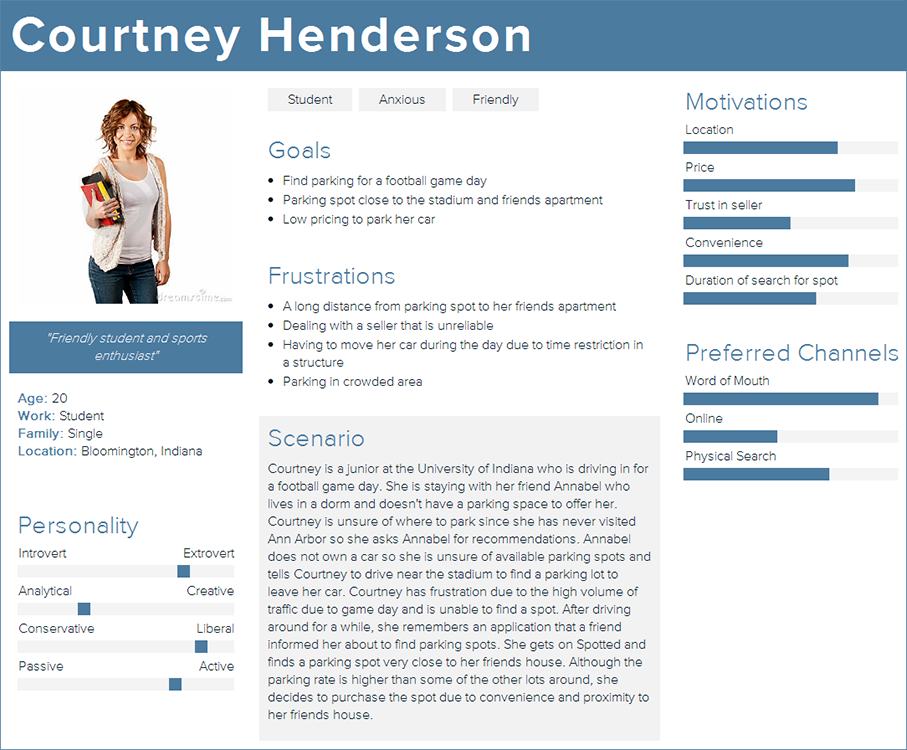
Long-term Buyers
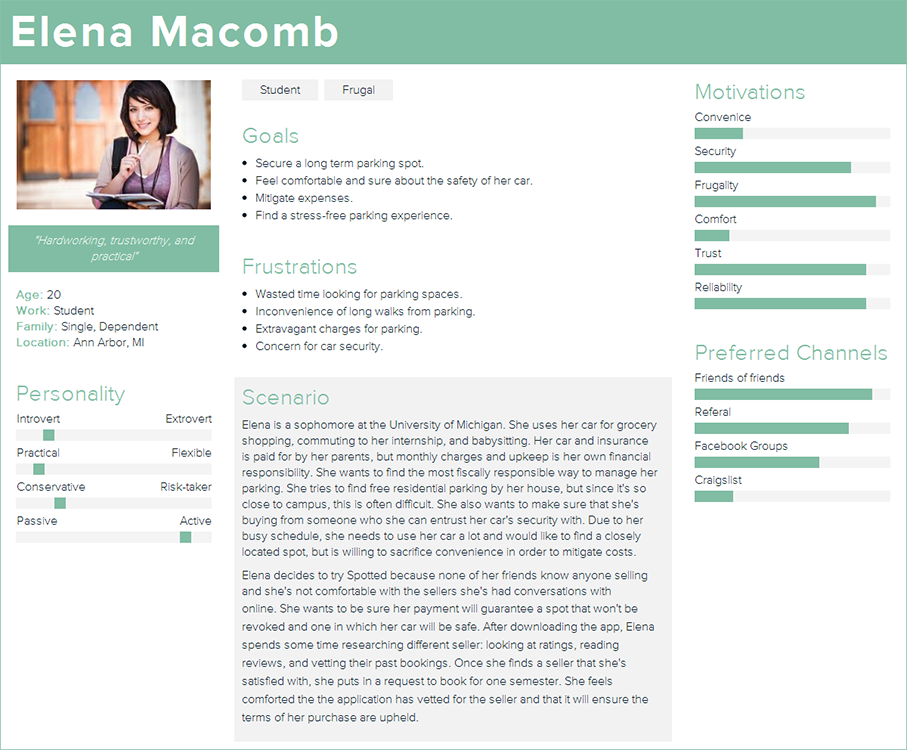
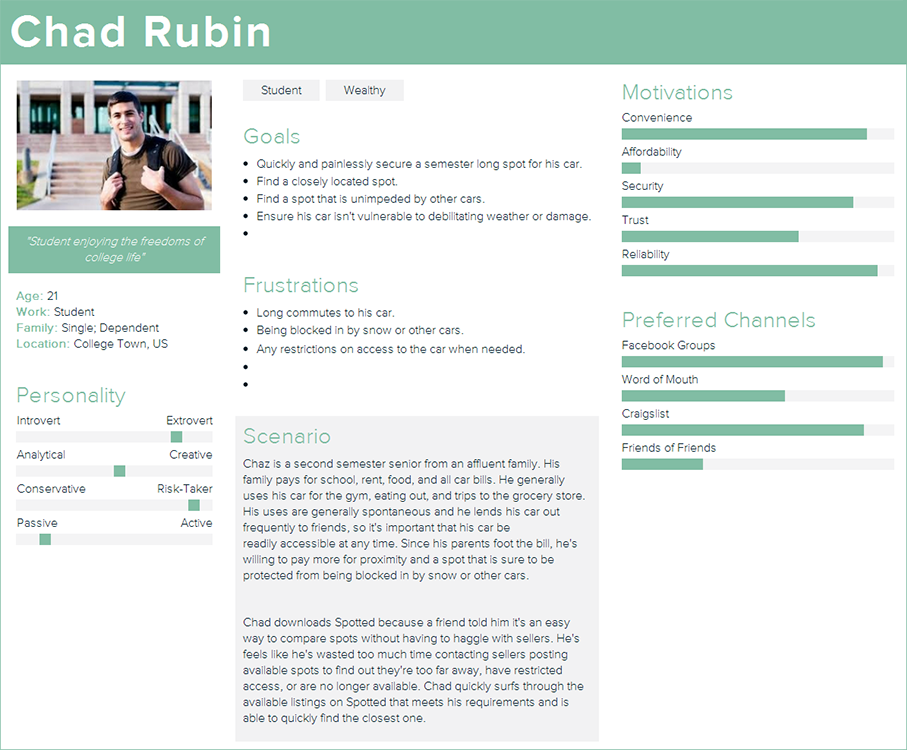
Short-term Seller
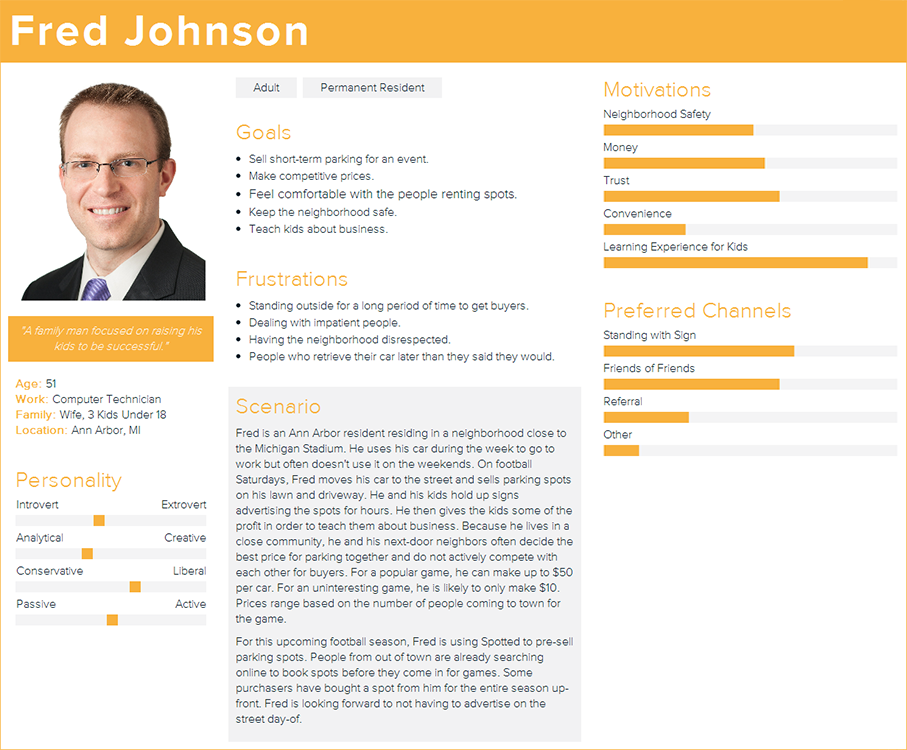
Long-term Seller
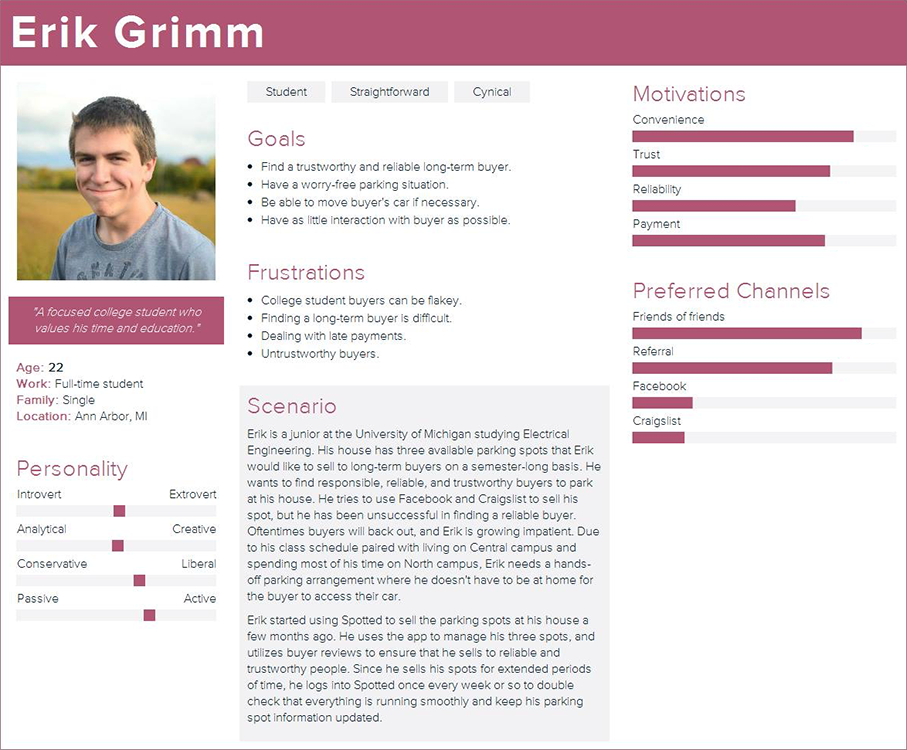
Minimum Viable Product
After doing my research, I felt that technology could solve this problem. I set out to build a web app that would allow buyers to get parking spots before arriving in Ann Arbor and that would allow sellers to advertise their spots from their couch, which is exactly what I did.
I utilized the Google Maps API to load a map of Ann Arbor, and I built custom map points showing where open parking spots are located.
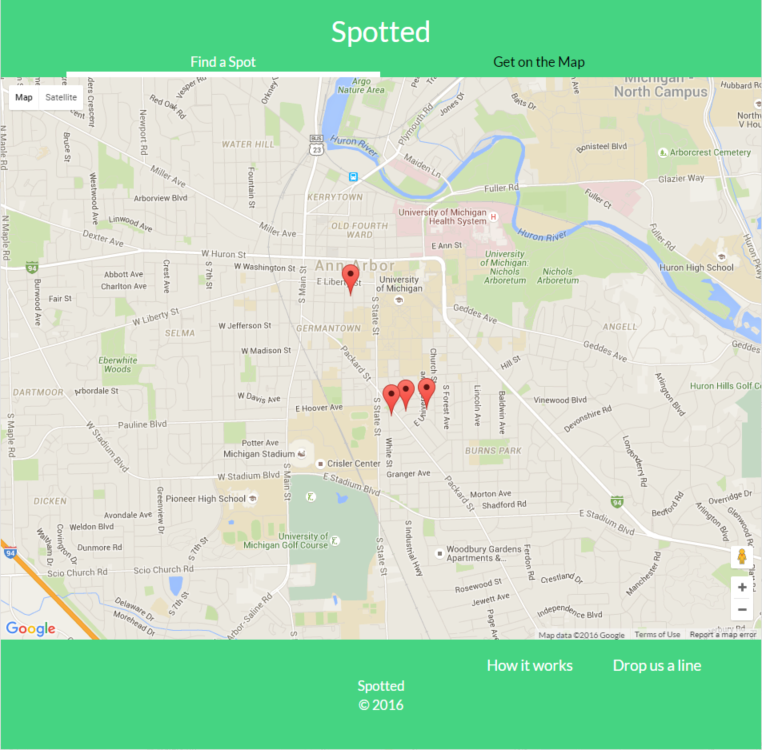
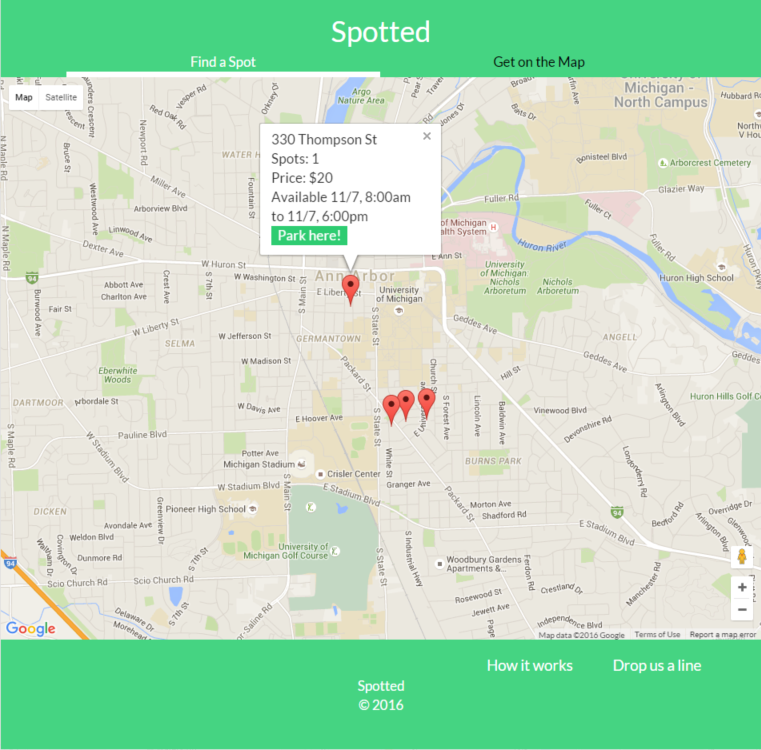
Clicking on a spot tells you the address, the number of available spots, the cost of the spot, and the times it's available.
Clicking the "Park Here" button opens an email addressed to me that lets the buyer tell me they want the spot. I then contact the seller to confirm the sale, and I collect the payment from the buyer. I take my cut and give the rest of the payment to the seller, at which point I share the buyer's and seller's contact information with each other.
I built a simple and straightforward form for sellers to get their spots listed on the map. All they have to input is their name, address, phone number, email, the number of spots they are selling, the price per spot, and the spot availability.
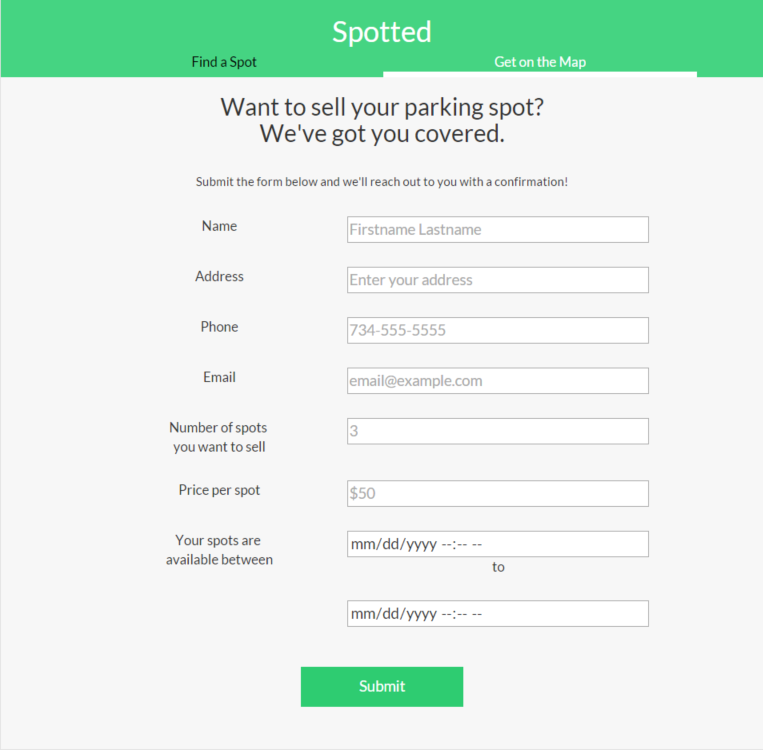
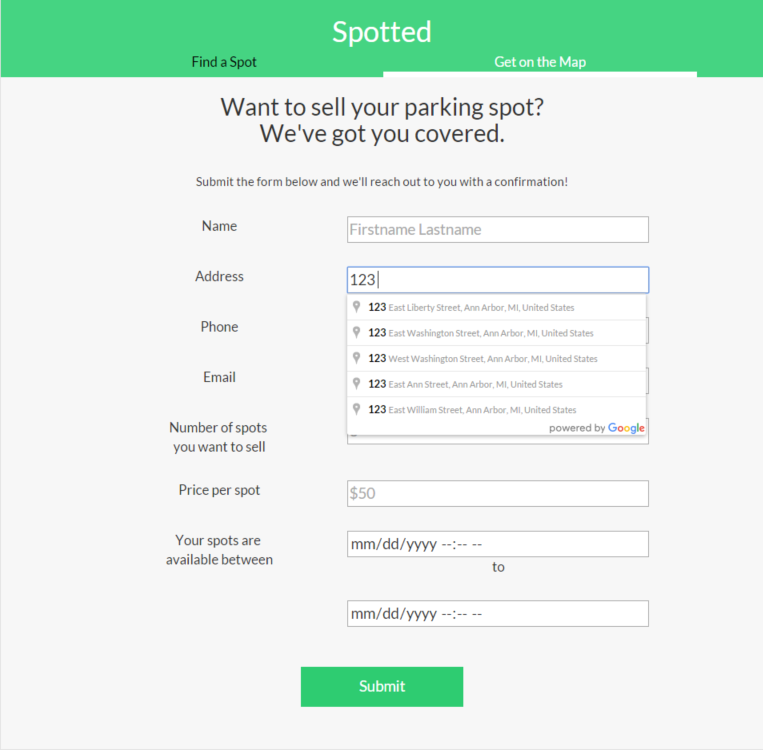
A cool feature of the form is that I programmed it to use the Google Places API to autosuggest addresses based on your location. Not only does this provide a convenient user experience, but it standardizes the addresses that are submitted, making it easy to put them on the map.
Usability Evaluation
With the minimum viable product built, we began our evaluation process. After contacting buyers and sellers with whom we had previously spoken, we were able to secure four buyers and two sellers for our usability evaluation. These participants satisified the four types of users whom we had identified during our initial research.
We developed two separate protocols – one for buyers, the other for sellers – to walk participants through completing tasks of low, moderate, and high difficulty levels. Our goal was to learn the strengths and weaknesses of our design, and we were happy with our findings.
Without getting too deep into the granular details, our general takeaways were to:
- Provide more parking spot information to buyers
- Require more parking spot details, i.e. size of vehicle, covered vs. uncovered
- Build user login to allow for easier buying/selling, viewing of past and upcoming reservations, and facilitate direct buyer-seller communication
Launch & Next Steps
Once our initial usability evaluations were complete, we used that feedback to improve the interface and user experience. I began developing the new interface and features in May 2016, and we incorporated and went live in August 2016.
We planned to open up the app to accommodate long term parking, geared towards students who need to find parking for a semester or school year; however, we decided to end our journey with Spotted before doing so.
We've since taken down our website, parkwithspotted.com, but I still have the code if you're curious to learn more.
Biggest Takeaways
- Convenience is more important than cost
- Lots of people need parking spaces that other people don't use
- People need to park, and they need to park now